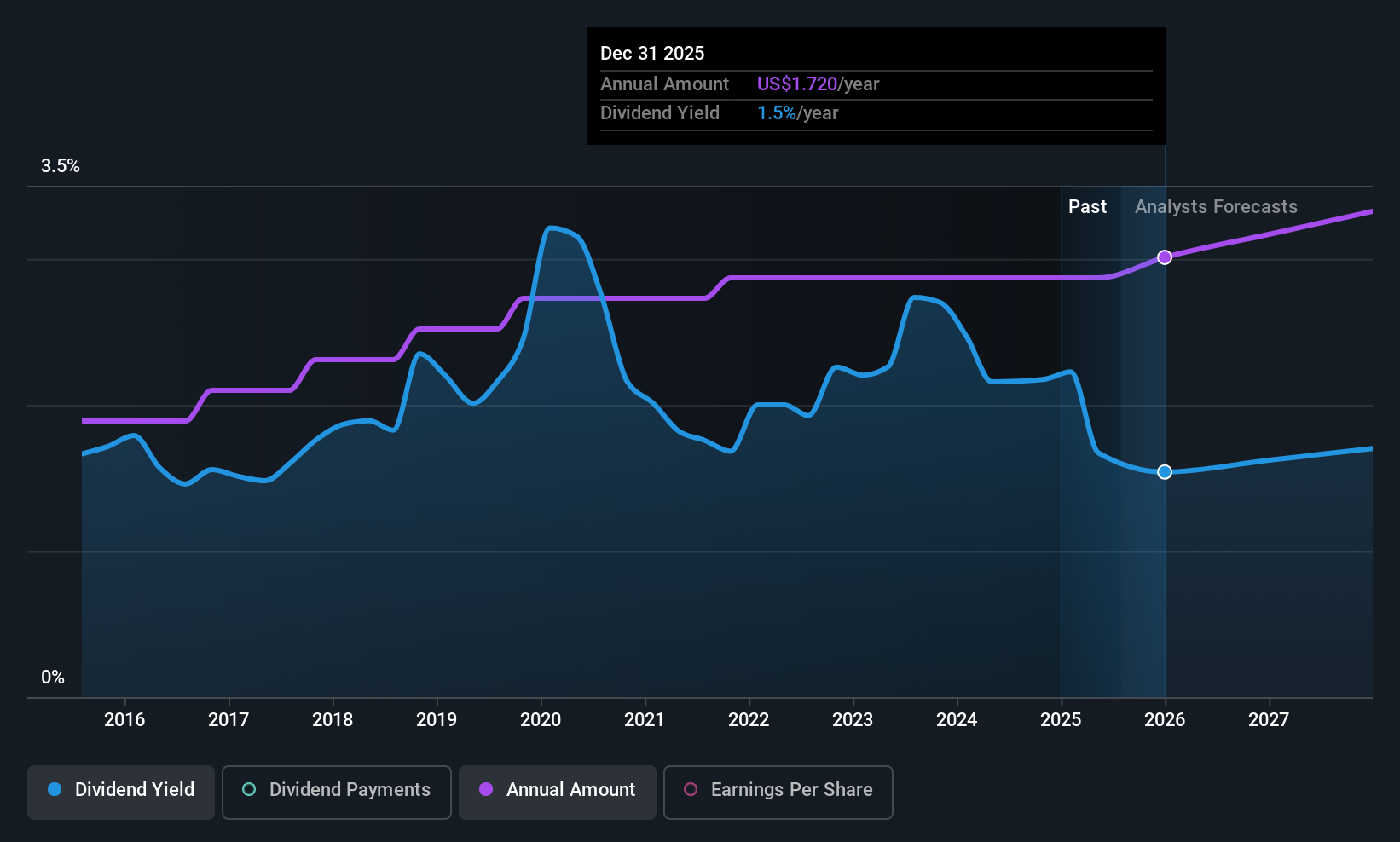Income Investors Should Know That Sensient Technologies Corporation (NYSE:SXT) Goes Ex-Dividend Soon
Some investors rely on dividends for growing their wealth, and if you're one of those dividend sleuths, you might be intrigued to know that Sensient Technologies Corporation (NYSE:SXT) is about to go ex-dividend in just 3 days. The ex-dividend date occurs one day before the record date, which is the day on which shareholders need to be on the company's books in order to receive a dividend. The ex-dividend date is of consequence because whenever a stock is bought or sold, the trade takes at least one business day to settle. Accordingly, Sensient Technologies investors that purchase the stock on or after the 4th of August will not receive the dividend, which will be paid on the 2nd of September.
The company's next dividend payment will be US$0.41 per share, and in the last 12 months, the company paid a total of US$1.64 per share. Based on the last year's worth of payments, Sensient Technologies stock has a trailing yield of around 1.5% on the current share price of US$111.61. Dividends are a major contributor to investment returns for long term holders, but only if the dividend continues to be paid. We need to see whether the dividend is covered by earnings and if it's growing.
Dividends are typically paid out of company income, so if a company pays out more than it earned, its dividend is usually at a higher risk of being cut. Sensient Technologies paid out 51% of its earnings to investors last year, a normal payout level for most businesses. Yet cash flow is typically more important than profit for assessing dividend sustainability, so we should always check if the company generated enough cash to afford its dividend. It paid out 110% of its free cash flow in the form of dividends last year, which is outside the comfort zone for most businesses. Companies usually need cash more than they need earnings - expenses don't pay themselves - so it's not great to see it paying out so much of its cash flow.
While Sensient Technologies's dividends were covered by the company's reported profits, cash is somewhat more important, so it's not great to see that the company didn't generate enough cash to pay its dividend. Cash is king, as they say, and were Sensient Technologies to repeatedly pay dividends that aren't well covered by cashflow, we would consider this a warning sign.
View our latest analysis for Sensient Technologies
Click here to see the company's payout ratio, plus analyst estimates of its future dividends.

Have Earnings And Dividends Been Growing?
Businesses with strong growth prospects usually make the best dividend payers, because it's easier to grow dividends when earnings per share are improving. If earnings fall far enough, the company could be forced to cut its dividend. Fortunately for readers, Sensient Technologies's earnings per share have been growing at 10% a year for the past five years. Earnings have been growing at a decent rate, but we're concerned dividend payments consumed most of the company's cash flow over the past year.
The main way most investors will assess a company's dividend prospects is by checking the historical rate of dividend growth. In the last 10 years, Sensient Technologies has lifted its dividend by approximately 5.1% a year on average. Earnings per share have been growing much quicker than dividends, potentially because Sensient Technologies is keeping back more of its profits to grow the business.
Final Takeaway
From a dividend perspective, should investors buy or avoid Sensient Technologies? Earnings per share growth is a positive, and the company's payout ratio looks normal. However, we note Sensient Technologies paid out a much higher percentage of its free cash flow, which makes us uncomfortable. Overall we're not hugely bearish on the stock, but there are likely better dividend investments out there.
With that being said, if dividends aren't your biggest concern with Sensient Technologies, you should know about the other risks facing this business. Our analysis shows 1 warning sign for Sensient Technologies and you should be aware of it before buying any shares.
A common investing mistake is buying the first interesting stock you see. Here you can find a full list of high-yield dividend stocks.
Have feedback on this article? Concerned about the content? Get in touch with us directly. Alternatively, email editorial-team (at) simplywallst.com.
This article by Simply Wall St is general in nature. We provide commentary based on historical data and analyst forecasts only using an unbiased methodology and our articles are not intended to be financial advice. It does not constitute a recommendation to buy or sell any stock, and does not take account of your objectives, or your financial situation. We aim to bring you long-term focused analysis driven by fundamental data. Note that our analysis may not factor in the latest price-sensitive company announcements or qualitative material. Simply Wall St has no position in any stocks mentioned.
 Nasdaq
Nasdaq Wall Street Journal
Wall Street Journal